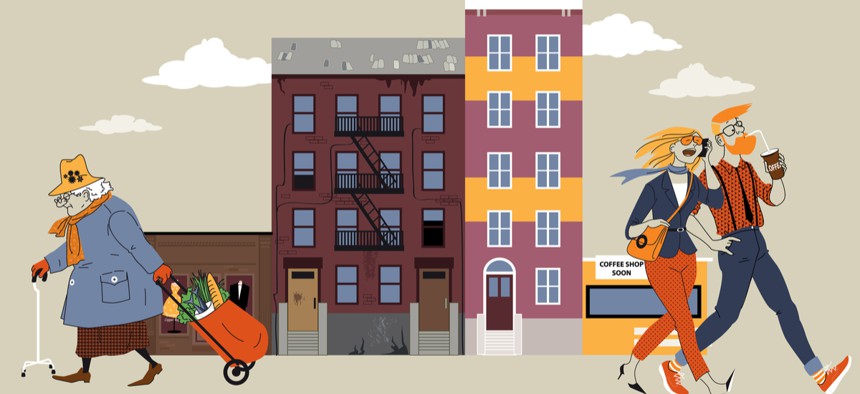How Machine Learning and AI Can Predict Gentrification

Aleutie/Shutterstock.com
New research from the Urban Studies journal uses London as a test site to show how machine learning can predict which neighborhoods will gentrify next.
Concern about gentrification has grown in the past decade as the affluent and educated have surged back into cities. But can the pace and pattern of future gentrification be predicted? New research by a team of data scientists and geographers says so.
The research, conducted by Jonathan Reades, Jordan De Souza, and Phil Hubbard of Kings College London and published in the Urban Studies journal, uses an artificial intelligence technique called machine learning that essentially trains computer models to learn from past data to predict future patterns. In this case, the research team used data on past gentrification in London to predict where it will next occur.
The study used machine learning to analyze 2001 data in order to “predict” gentrification as it occurred in 2011. Then, using that model, it predicted where gentrification will occur in 2021. It began by measuring socioeconomic status with four key variables: household income, real estate values, occupational share (percentage in the “top” occupational classes) and job qualifications (based on the share of residents achieving a certain level of a national vocational certification).
Once researchers calculated socioeconomic status for each neighborhood, they analyzed how other demographic measures like age and ethnicity correlate with gentrification. The neighborhood data is based on the UK’s Lower Layer Super Output Area (LSOA), an area similar to a U.S. census tract with between 1,000 and 3,000 people.
When the 2001 model predicted what would happen in 2011, it lined up quite accurately with what had occurred in real life. It generated a very close statistical fit, compared to other traditional models like standard regression analysis.
Surprisingly, the study found that key demographic factors, like the presence of “DINKs” (Dual Income, No Kids couples), vehicle ownership, or ethnicity, did not rank strongly on the list of top predictors for gentrification. Immigration did predict gentrification, but only from other members of the EU (as of 2001), the Americas, and Australia and New Zealand. The type of building also had some predictive value, especially for terraced or older buildings. Ultimately, the study found that most of the top predictors reflected occupation: working long hours, skills and qualifications, and job flexibility, such as self-employment or working from home.
The map below charts gentrification in 2011, using change in socioeconomic status since 2001 on the neighborhood level. It shows two key axes of gentrification emanating from Central London, one to the Southwest and another to the Northeast, featuring so-called “Billionaire’s Row.” Dark purple neighborhoods saw a decline in status, while yellow neighborhoods saw an increase. Pale mint represents areas in which the change in status was so small, it may not be statistically relevant. Even well-off neighborhoods experienced change and gentrification according to this model.
Gentrifying Neighborhoods in 2011

The next map shows the predictions for gentrification in 2021, again charting gentrification as change in socioeconomic status within neighborhoods. Here the model predicts gentrification not only in the central neighborhoods of Westminster, Kensington, and Chelsea, but also that it will spread further out to typically working-class boroughs. At the same time, it predicts that gentrification will pass over smaller towns in the outskirts, suggesting that uplift in one neighborhood may be linked to displacement and thus the decline of another neighborhood. Dark purple represents a decrease in status, and yellow represents an increase.
Predictions for Gentrifying Neighborhoods for 2021

The model also predicts that there will eventually be an overall slowing of gentrification. Notably, the neighborhoods that underwent the most drastic change from 2001 to 2011 will show less change from 2011 to 2021. The model finds these neighborhood scores will grow higher over time, but the trend may not accelerate.
In the future, the research team hopes to reexamine their approach but with more timely data, such as real-time property prices through Zoopla (a real estate website, similar to Zillow in the U.S.) or even other cultural consumption markers through Twitter, to predict how and where gentrification will strike well ahead of time.
While events like Brexit and new transit infrastructure projects may alter the course of gentrification, it appears that tools like machine learning can help us understand not only why gentrification has occurred in the past, but also where it is most likely to occur in the future.
CityLab editorial fellow Claire Tran contributed research and editorial assistance to this article.





